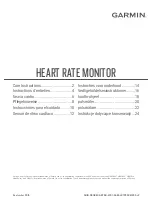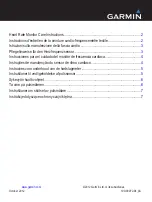
200
ifm
Programming Manual BasicDisplay CR0452 v03.02
05 / 2018
Terms and abbreviations
>
Operational
Operating state of a CANopen participant. In this mode
→SDOs, →NMT commands and →PDOs can
be transferred.
>
P
PC card
→PCMCIA card
>
PCMCIA card
PCMCIA = Personal Computer Memory Card International Association, a standard for expansion
cards of mobile computers.
Since the introduction of the cardbus standard in 1995 PCMCIA cards have also been called PC card.
>
PDM
PDM =
P
rocess and
D
ialogue
M
odule.
Device for communication of the operator with the machine / plant.
>
PDO
PDO =
P
rocess
D
ata
O
bject.
The time-critical process data is transferred by means of the "process data objects" (PDOs). The
PDOs can be freely exchanged between the individual nodes (PDO linking). In addition it is defined
whether data exchange is to be event-controlled (asynchronous) or synchronised. Depending on the
type of data to be transferred the correct selection of the type of transmission can lead to considerable
relief for the
→CAN bus.
According to the protocol, these services are unconfirmed data transmission: it is not checked whether
the receiver receives the message. Exchange of network variables corresponds to a "1 to
n connection" (1 transmitter to n receivers).
>
PDU
PDU =
P
rotocol
D
ata
U
nit = protocol data unit.
The PDU is a term from the
→CAN protocol →SAE J1939. It refers to a component of the target
address (PDU format 1, connection-oriented) or the group extension (PDU format 2,
message-oriented).
>
PES
P
rogrammable
E
lectronic
S
ystem ...
• for control, protection or monitoring,
• dependent for its operation on one or more programmable electronic devices,
• including all elements of the system such as input and output devices.
>
PGN
PGN =
P
arameter
G
roup
N
umber
PGN = 6 zero bits + 1 bit re 1 bit data page + 8 bit PDU Format (PF) + 8 PDU Specific (PS)
The parameter group number is a term from the
→CAN protocol →SAE J1939.










































